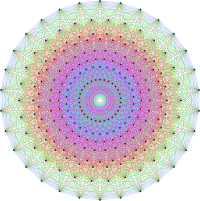Satake diagram

Imagine you're trying to sort a bunch of different things into groups based on their similarities. Maybe you have a big pile of toys and you want to sort them into groups like dolls, cars, and stuffed animals. How do you decide which toys belong in which group?
A satake diagram is kind of like a map that helps you sort things. It works by comparing the things you're sorting and figuring out which ones are most similar. Then, it puts those similar things together in a group.
Here's an example of how a satake diagram might work. Imagine you want to sort a bunch of fruits into groups. You might start by comparing their colors, and notice that some are red, some are yellow, and some are green. So, you could draw a big circle for each of those colors and write down the names of the fruits that match. For example, the red circle might have apples and strawberries, while the green circle might have grapes and kiwis.
But what about fruits that don't fit neatly into one of those groups? Maybe there's a fruit that is mostly red, but has some yellow spots. Or maybe there's a fruit that's a mix of green and yellow. For those fruits, you need to create a new group that includes both colors. So, you might draw a circle that's half red and half yellow, and put those mixed fruits in that circle.
As you keep sorting fruits, you might notice other similarities, like which ones are sweet or sour, or which ones have a lot of seeds or not. Each time you notice a new similarity, you can create a new group on your satake diagram and add the fruits that match.
By the end, you'll have a neat diagram that shows all the different groups of fruits, and which fruits belong in each group. It's a way of organizing information that can be really helpful when you have a lot of things to sort through!
A satake diagram is kind of like a map that helps you sort things. It works by comparing the things you're sorting and figuring out which ones are most similar. Then, it puts those similar things together in a group.
Here's an example of how a satake diagram might work. Imagine you want to sort a bunch of fruits into groups. You might start by comparing their colors, and notice that some are red, some are yellow, and some are green. So, you could draw a big circle for each of those colors and write down the names of the fruits that match. For example, the red circle might have apples and strawberries, while the green circle might have grapes and kiwis.
But what about fruits that don't fit neatly into one of those groups? Maybe there's a fruit that is mostly red, but has some yellow spots. Or maybe there's a fruit that's a mix of green and yellow. For those fruits, you need to create a new group that includes both colors. So, you might draw a circle that's half red and half yellow, and put those mixed fruits in that circle.
As you keep sorting fruits, you might notice other similarities, like which ones are sweet or sour, or which ones have a lot of seeds or not. Each time you notice a new similarity, you can create a new group on your satake diagram and add the fruits that match.
By the end, you'll have a neat diagram that shows all the different groups of fruits, and which fruits belong in each group. It's a way of organizing information that can be really helpful when you have a lot of things to sort through!
Related topics others have asked about:
